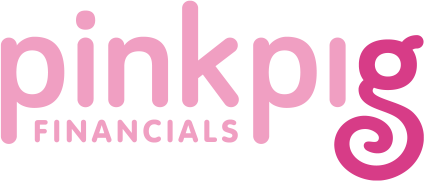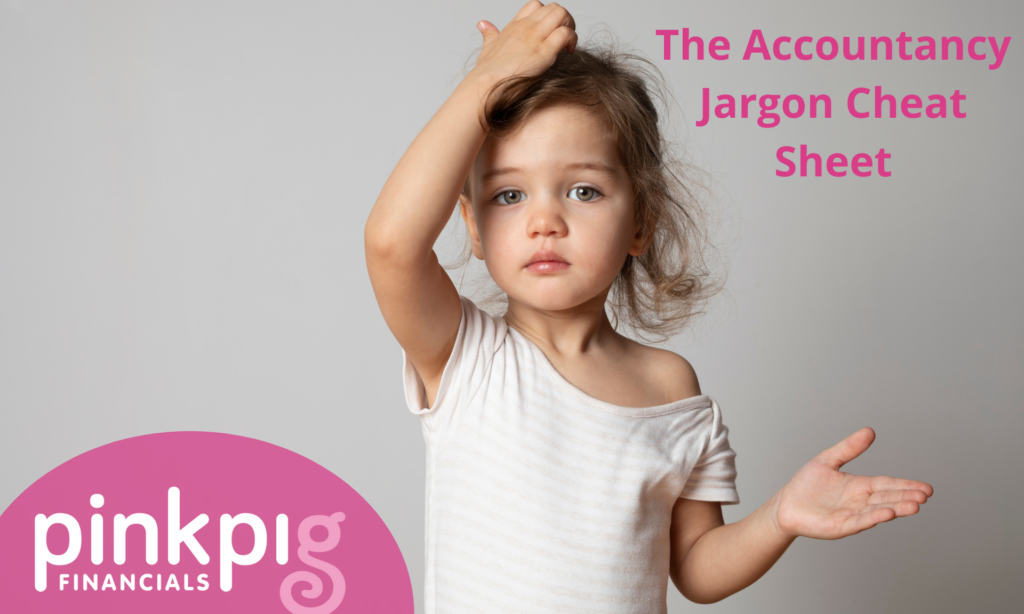When I joined PPF a year ago, I didn’t come from an accounting background. So although there was a lot I could help with from an admin perspective, I just didn’t understand the accountancy jargon that was used in most reports and documentation. Now this wasn’t exactly a bad thing, as I could bring a different approach to the team but obviously, I would need to start somewhere with learning the phrases accountants used.
Thankfully for me PPF has always strived to explain everything in simple easy to understand terms and remove the unnecessary jargon for our clients, so it wasn’t long before I started picking up and understanding the lingo. One of the greatest things that helped me was our accountancy jargon cheat sheet that I could refer to. Some of it, I did already know and had heard of and other bits were completely new to me.
We recognise that too many accountants use words and jargon that business owners just don’t understand (and don’t really need to!). As it has helped me, we’ve put this cheat sheet together so you know what they mean!
And to be even more helpful, we made it into a downloadable document so that you can keep it to hand whenever you need to refer back to it!
| CT600 | = | Corporation tax computation. This is the tax return that has to be completed for HMRC, breaking down your accounts and working out the corporation tax liability. | |
| SA100 | = | This is the main Personal tax return form | |
| SA302 | = | Is a brief summary of the personal income that has been reported to HMRC on the SA100. Your mortgage broker/ company may ask for this when applying for a mortgage. | |
| P11D | = | Any benefits that a person receives from a company, need to be detailed on a P11d for HMRC to know the value. | |
| Profit & Loss statement | = | This details all income and expenditure for the entire trading year for the company. | |
| Balance sheet | = | The balance sheet is a snapshot look at a company’s assets and liabilities that are held on the last day of the trading year. | |
| Trial Balance | = | A trial balance is a combination of the profit and loss account codes and the balance sheet codes. A Trial balance will also include the accounts that are not included in the statutory accounts eg: dividends. | |
| Statutory Accounts | = | These are the Profit & loss, Balance sheet and Detailed profit & loss, for the trading year of the company. | |
| Abridged Accounts | = | The statutory accounts are for you and whoever you wish to share them with, the Abridged version is the set that is filed to Companies House. They will only contain the company information and the balance sheet, Companies House do not require the Profit and loss account for small or micro companies. | |
| FRS105 | = | Is the accounting standard that Micro entity accounts can be prepared under. Micro is defined as Companies with a turnover under £630,000, a balance sheet total of under £316,000 and no more than 10 employees. | |
| FRS102 | = | For those who do not fall under the above criteria – FRS102 is the accounting standard that needs to be applied when preparing the financial statements. | |
| Gross Profit | = | This is the profit the company has made after all direct costs have been deducted. | |
| Net Profit | = | This is the profit the company has made after all overheads have been deducted from the gross profit. | |
| EBITDA | = | Earnings before interest, tax, depreciation and amortization. This is the profit made purely from trading activities. | |
| PAYE | = | Pay As You Earn – This is a payrolled employee, tax and National insurance are paid in the frequency of the payroll. | |
| Dividends | = | Only shareholders can take dividends from a company, dividends is the money that shareholders can take out of the net profit, after corporation tax has been accounted for. | |
| Fixed asset | = | A purchase of an item that costs over £100 and is to be used for more than a year within the company and to its benefit eg: Laptop, van, desk etc | |
| Depreciation | = | When a company purchases a fixed asset, its reasonable life is estimated and the asset is devalued over that period of time. | |
| Capital allowances | = | When the figures are broken down for the CT600, the depreciation is disallowed. However you can claim capital allowances instead. These can range from 100&. 18% or 6% of the value depending on the asset. | |
| Directors Loan account | = | Throughout the year, when a director takes money out of the company, it is put to the directors loan. When they pay for expenses personally, these too are put to the loan account. At year end this balance is tallied and declared in the accounts. | |
| Retained earnings | = | When a company makes a profit, if not all is taken by the shareholders in the form of dividends, then this profit is carried forward and is called retained earnings which can be drawn on at a later date. | |
| Accruals | = | An accrual is an expense that you know, and is related to the year, is coming but may not have had the bill for yet by the time the year end comes around. Eg: an employee bonus. An accrual for this expense will be included in the accounts to allow for it. | |
| Prepayment | = | This is an expense that is included in the profit and loss account but some of it may relate to the next year. Eg: Business rates – the bill is for 12 months, but 6 months of that belongs to the next year. A prepayment entry will be made to reflect this. | |
| Overheads | = | Costs that you have to meet each month – ie rent, telephone, internet etc | |
| Cash Flow | = | This is the cash that flows into and out of your business account – so the cash you receive and pay out. A cash flow forcast uses information in your accounts to predict when you will have money in your account and when you are likely to be a little low on funds and may need help to pay your bills | |
| Break Even Point | = | The sales you need to cover all of your expenses | |
| Stock Turnover | = | How long it takes to sell your stuff | |
| Debtor Days | = |
|
|
| Cash Burn Rate | = | When you will run out of cash | |
| Advisory | = | A service where accountants provide information to help advise a business owner to plan for the future |
Of course this is a very general guide to help you understand what you are reading in reports or what you are being told. For a full explanation specific to you please don’t hesitate to ask us and if you are looking for an accountant that promises to use plain old English and no jargon then head over to our Get started page.
Looking for some tax tips and advice? Check out PPF on YouTube!

